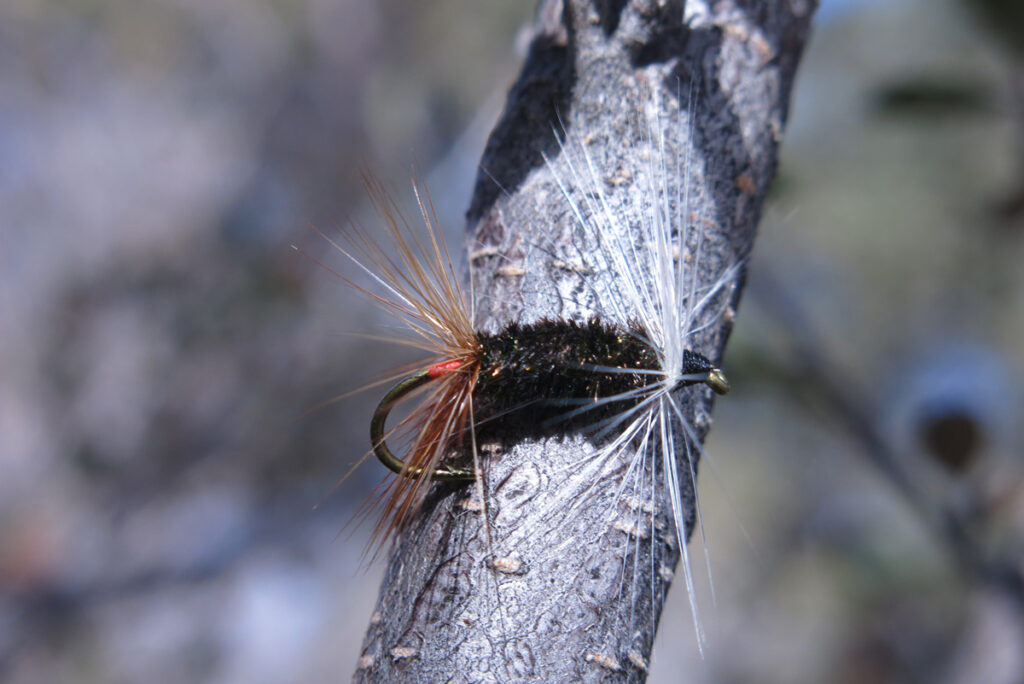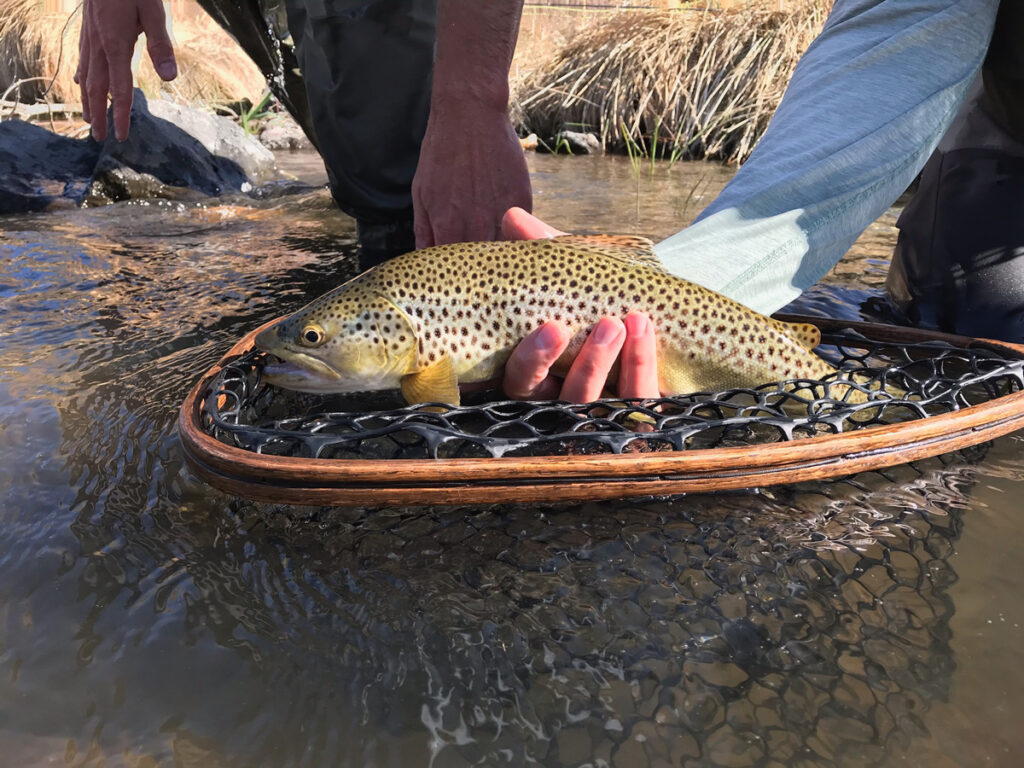Albuquerque has its balloon fiesta and Santa Fe has Zozobra. Many places also have annual celebrations around nature-made events: the blossoming of Washington, D.C.’s cherry trees, for example, or the spectacular autumn leaves of New England’s deciduous trees.
If you’re an observant trout angler, you can go from spring through fall knowing what month it is by visiting a local stream and taking note of the insects flying around you. In northern New Mexico, April is the time of the caddisfly hatch, the natural Cambalache on the Rio Grande. At its most prolific, the flyfisher can keep neither fish off her line nor bugs out of her mouth and eyes. Sounds gross, but one gets used to this special kind of mayhem.

Known as the Mother’s Day hatch, the American Grannom hatch, or just the little black caddis hatch, the event features the Brachycentrus occidentalis, a variety of caddisfly known for cocooning itself in a house of tiny sticks and then hatching into a moth a little smaller than your pinky nail. The hatch isn’t unique to the Rio. Famous caddis hatches—and by famous, I mean hatches that inspire die-hard trout bums to buy plane tickets or hit the road in RVs—occur on the Yellowstone River in Montana and northern California’s lower Sacramento, among other major rivers. The Colorado towns of Buena Vista and Salida view the Mother’s Day hatch on the Arkansas River as a time of great economic opportunity, of jam-packed restaurants and hotel rooms booked far in advance.
The caddis hatch is generally triggered when spring water temperatures warm to around 50 degrees Fahrenheit, at which point caddis larvae metamorphose into a pupal phase. At hatching time, these pupae break out of their houses and rise quickly to the water surface in an air-filled bubble of their own saliva. Having evolved to understand that pupae reaching the surface will pop directly into the air as fully-developed moths, trout feed on caddis with a thrilling urgency. Casting downstream and across and letting the current swing your fly back to you is a great way to experience this feeding frenzy. Word to the wise, you will feel all your strikes when you fish this way. Your line should be tight and the fish will hit hard, so setting the hook usually results in your line snapping. Resist setting the hook and let the fish hook themselves.
Due to climate change, the Mother’s Day hatch has essentially become the Tax Day hatch, since water warms earlier in the year. The Rio is a bit murky at that time from earlier runoff, but the fish don’t seem to mind. The hatch used to progress upstream, from around Velarde to the state line, but it’s often everywhere these days, perhaps another change from pre-climate change times.

Fishing the hatch is easy, at least at its onset. Productive dry flies include Elk Hair Caddis or any downwing fly in black or dark olive on a size 16 hook. Fish a Renegade as a dry fly or swing it downstream to imitate emergent pupae. Good caddis nymphs include the Fox Poopah, Prince, Hare’s Ear, and Secret Fly. Again, anything dark olive or black should do the trick.
After it’s been moving for a week or so, the caddis hatch can get a little tough. You’ll see bugs everywhere, but the fish will seem to have disappeared. Imagine eating a potato chip every couple seconds, non-stop, all day long for a week. You will eventually reach a point when your belly will be all stretched and your desire to eat will become inversely proportional to your need to lie on the couch and take a nap.
In the heat of the caddis hatch, this is how the trout feel—fat—and for much of the middle of the day, extremely lazy. Take slower fishing as your sign to focus on the shady hours of morning and evening, when the fish will be eating their fill before ducking under the rocks for siesta time.




